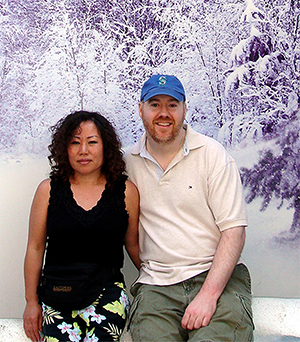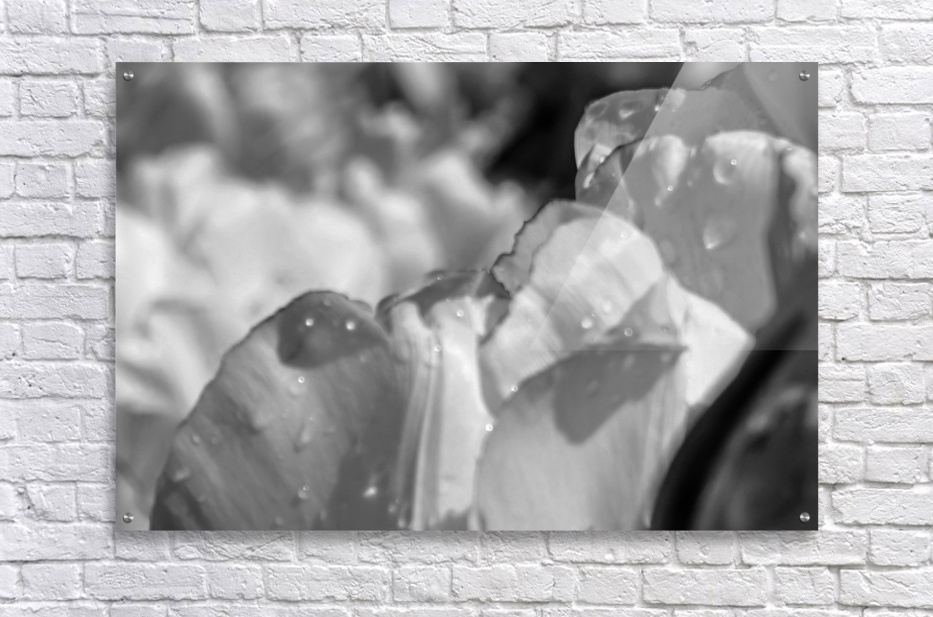

Living Well: Daily Habits and Practices
A fulfilling life is built on small, daily actions. In this series, William and Hui Cha Stanek share their insights on cultivating meaningful habits—from morning routines to simple practices that enhance well-being—helping you live with purpose and balance.
- Living Well: Daily Habits and Practices
- (May 20, 2025) The Practice of Letting Go: How to Release What No Longer Serves You
- The Stanek Process of Letting Go: How William and Hui Cha Released What Held Them Back
- 1. Facing Past Hurts with Courage
- 2. Letting Go of Unhelpful Habits
- 3. Releasing Toxic Relationships
- Identifying What No Longer Serves You: Lessons from the Staneks’ Journey
- 1. Listen to Your Inner Voice
- 2. Assess the Impact on Your Well-Being
- 3. Acknowledge the Fear of Letting Go
- Practical Steps for Letting Go and Moving Forward, Inspired by the Staneks
- 1. Start with Self-Reflection
- 2. Set Clear Intentions
- 3. Take Small, Consistent Steps
- 4. Practice Forgiveness and Compassion
- The Emotional Freedom of Letting Go: Real-Life Stories from William and Hui Cha
- 1. Letting Go of Control
- 2. Releasing Old Identities
- 3. Forgiving and Moving On
- Call to Action: Identify One Thing to Let Go of Each Week
- Conclusion: The Liberation of Letting Go

Transform your life with practical wisdom. Discover William Stanek's 'Living Well' series—your guide to a balanced and fulfilling life.
Discover William Stanek's Exclusive Art Collection
Explore and purchase the stunning art featured on this site. Own a piece of William Stanek's unique and captivating artwork today!
(May 20, 2025) The Practice of Letting Go: How to Release What No Longer Serves You
Life is a journey filled with both beauty and challenges, and along the way, we often accumulate emotional baggage, unhelpful habits, and toxic relationships that weigh us down. For William and Hui Cha Stanek, learning to let go of what no longer served them was not just a step toward healing—it was a vital practice that enabled them to move forward with clarity, purpose, and a renewed sense of freedom. This article explores how they embraced the art of letting go and how you can apply these lessons to your own life to create space for growth, happiness, and peace.
The Stanek Process of Letting Go: How William and Hui Cha Released What Held Them Back
William and Hui Cha’s lives have been shaped by their ability to release the past and embrace the present. Their process of letting go was not a one-time event, but a continuous practice that allowed them to shed what no longer served them and make room for new possibilities.

1. Facing Past Hurts with Courage
One of the most challenging aspects of letting go for William and Hui Cha was dealing with past hurts. Whether it was the trauma of military service, personal losses, or the pain of unfulfilled dreams, they understood that holding onto these emotional wounds would only keep them stuck in a cycle of pain. Instead of burying their feelings or pretending they didn’t exist, they chose to face their past with courage and honesty.
William’s experience with Gulf War Syndrome, for example, brought physical pain and emotional distress that could have easily overwhelmed him. However, instead of allowing this experience to define him, he made a conscious decision to confront his feelings, process them, and ultimately let them go. This wasn’t about forgetting or ignoring the past, but about acknowledging it, learning from it, and then releasing it so it no longer held power over his present.
2. Letting Go of Unhelpful Habits
Both William and Hui Cha recognized that some of their habits were not serving their best interests. Whether it was the habit of overworking, holding onto grudges, or engaging in negative self-talk, they knew that these patterns were holding them back from living fully. The practice of letting go involved identifying these unhelpful habits and making a deliberate choice to change them.
For Hui Cha, this meant letting go of the need to always be in control and learning to trust the process of life. This shift allowed her to embrace more spontaneity, joy, and peace in her daily life. By releasing the habit of overthinking and worrying about things beyond her control, she found greater freedom and a deeper connection to the present moment.
3. Releasing Toxic Relationships
One of the most significant aspects of their journey was learning to let go of toxic relationships. William and Hui Cha understood that not all relationships are meant to last, and that clinging to relationships that were harmful or draining was preventing them from living authentically. This realization led them to make difficult but necessary decisions to distance themselves from people who did not support their growth or well-being.
In these moments, they leaned on each other for support, knowing that letting go of toxic relationships would create space for healthier, more fulfilling connections. This decision was not made out of anger or resentment, but from a place of self-respect and the desire to live in alignment with their values.

Identifying What No Longer Serves You: Lessons from the Staneks’ Journey
Before you can let go of what no longer serves you, it’s important to identify the areas of your life where release is needed. William and Hui Cha’s journey offers valuable lessons on how to recognize when it’s time to let go.
1. Listen to Your Inner Voice
Your intuition often knows when something is no longer serving you, even if your mind hasn’t fully accepted it yet. William and Hui Cha learned to trust their inner voice when it came to making decisions about letting go. They paid attention to the feelings of unease, frustration, or dissatisfaction that signaled a need for change.
If you’re unsure about whether something or someone is serving your best interests, take a moment to sit quietly and listen to your inner voice. How do you feel when you think about this situation or person? Do you feel uplifted and supported, or drained and burdened? Your emotions can provide valuable clues about what needs to be released.
2. Assess the Impact on Your Well-Being
Another important step is to assess how a particular habit, relationship, or situation is affecting your overall well-being. William and Hui Cha often asked themselves whether a particular aspect of their life was contributing to their happiness, health, and personal growth. If the answer was no, they knew it was time to consider letting go.
Consider the impact that different areas of your life have on your mental, emotional, and physical health. Are there certain habits that are leading to stress, anxiety, or a lack of fulfillment? Are there relationships that consistently bring negativity or conflict into your life? By evaluating the impact on your well-being, you can gain clarity on what needs to change.

3. Acknowledge the Fear of Letting Go
One of the reasons we often hold onto things that no longer serve us is fear—fear of the unknown, fear of change, or fear of loss. William and Hui Cha faced these fears head-on, acknowledging them without letting them dictate their actions. They understood that fear is a natural part of the process, but it doesn’t have to control the outcome.
If you’re struggling with the idea of letting go, take some time to explore the fears that are holding you back. What are you afraid of losing? What’s the worst that could happen if you let go? By bringing these fears into the light, you can begin to see them for what they are and move forward with greater confidence.
Practical Steps for Letting Go and Moving Forward, Inspired by the Staneks
Letting go is not always easy, but it is a powerful step toward personal growth and freedom. Here are some practical steps inspired by William and Hui Cha’s journey that you can apply to your own life:
1. Start with Self-Reflection
The first step in letting go is to engage in deep self-reflection. Take some time to journal, meditate, or simply sit quietly with your thoughts. Reflect on the areas of your life where you feel stuck, burdened, or unfulfilled. What are you holding onto that no longer serves you? What are you ready to release in order to make space for something new?

2. Set Clear Intentions
Once you’ve identified what you need to let go of, set clear intentions for how you will move forward. For William and Hui Cha, setting intentions was a way to create a roadmap for change. They defined what they wanted to let go of, why it was important, and what they hoped to gain from the process.
For example, if you’re letting go of a toxic relationship, your intention might be to create more space in your life for healthy, supportive connections. If you’re releasing an unhelpful habit, your intention might be to replace it with a positive habit that enhances your well-being.
3. Take Small, Consistent Steps
Letting go doesn’t have to happen all at once. In fact, William and Hui Cha found that taking small, consistent steps was often the most effective way to create lasting change. They broke down the process of letting go into manageable actions that they could integrate into their daily lives.
For instance, if you’re letting go of a habit, start by making one small change each day. If you’re releasing emotional baggage, consider working with a therapist or practicing mindfulness techniques to help you process your feelings. The key is to keep moving forward, even if the steps are small.
4. Practice Forgiveness and Compassion
Letting go often involves forgiveness—both of yourself and others. William and Hui Cha found that practicing forgiveness was essential to freeing themselves from the past. This didn’t mean condoning hurtful behavior, but rather choosing to release the hold that resentment and anger had on their lives.
As you work on letting go, practice self-compassion and forgiveness. Acknowledge that you did the best you could with the knowledge and resources you had at the time. Extend the same compassion to others, recognizing that everyone is on their own journey of growth and learning.

The Emotional Freedom of Letting Go: Real-Life Stories from William and Hui Cha
The practice of letting go brought profound emotional freedom to William and Hui Cha, allowing them to live more fully and authentically. Here are some real-life stories from their journey that illustrate the power of release:
1. Letting Go of Control
One of the most transformative experiences for Hui Cha was learning to let go of the need for control. As someone who had always been meticulous and detail-oriented, she often found herself trying to manage every aspect of her life and the lives of those around her. However, this need for control became a source of stress and anxiety.
By practicing mindfulness and embracing the uncertainty of life, Hui Cha gradually released her grip on control. She learned to trust that things would unfold as they were meant to, and that her well-being didn’t depend on everything going according to plan. This shift brought her a sense of peace and allowed her to enjoy life more fully.
2. Releasing Old Identities
For William, letting go also meant releasing old identities that no longer fit who he was becoming. After leaving the military, he struggled with the transition to civilian life, feeling disconnected from the identity he had built during his years of service. This led to a period of self-reflection, where he realized that clinging to his past identity was preventing him from embracing new possibilities.
By letting go of his old identity and embracing the person he was becoming, William was able to create a new chapter in his life. He discovered new passions, developed new skills, and found fulfillment in ways he hadn’t imagined before. This experience taught him that letting go of the past is essential for personal growth and transformation.

3. Forgiving and Moving On
One of the most challenging aspects of letting go is forgiving those who have hurt us. William and Hui Cha both experienced moments in their lives where they were deeply hurt by others, and holding onto that pain only prolonged their suffering. Through self-reflection and the practice of forgiveness, they were able to release the anger and resentment that had been holding them back.
Forgiveness didn’t happen overnight, and it wasn’t always easy. But by choosing to let go of the pain and move on, they freed themselves from the emotional burdens that had been weighing them down. This process of forgiveness and release allowed them to move forward with a sense of peace and renewed purpose.
Call to Action: Identify One Thing to Let Go of Each Week
Inspired by the Staneks’ journey of letting go, we challenge you to identify one thing to let go of each week. This could be an unhelpful habit, a negative thought pattern, an emotional burden, or a toxic relationship. Take time to reflect on what no longer serves you and make a conscious decision to release it.
As you practice letting go, notice how it impacts your well-being, clarity, and sense of freedom. Share your experiences and progress with us using the hashtag #LetGoWithTheStaneks, and let’s support each other in creating a life of greater clarity, purpose, and peace.
Conclusion: The Liberation of Letting Go
For William and Hui Cha Stanek, the practice of letting go was a powerful tool for personal growth and emotional freedom. By releasing what no longer served them—whether it was past hurts, unhelpful habits, or toxic relationships—they were able to move forward with greater clarity, purpose, and joy.
Letting go is not always easy, but it is essential for living a full and authentic life. By making the conscious choice to release what no longer serves you, you create space for new opportunities, relationships, and experiences that align with your true self.
So, take the first step today—identify one thing to let go of, and begin the journey toward a life of greater freedom and fulfillment. Because when you let go of what holds you back, you open the door to endless possibilities and the chance to live your life with intention, clarity, and peace.

Join William at the crossroads of technology, business, and leadership, where true influence isn't about titles - it's about inspiring action, driving change, and guiding others with integrity. Discover how authentic leadership can transform not just careers, but entire industries.
Bring Inspiration Home
Enhance your space with William Stanek's evocative art. Each piece is crafted to inspire and uplift your everyday life.

Support The Lights of Paris by Robert Stanek, William Stanek's pen name! Through vivid historical detail and deeply moving character stories, Robert takes readers on an unforgettable journey through one of history’s most transformative times.
















